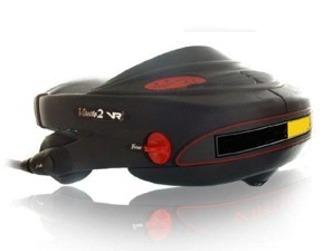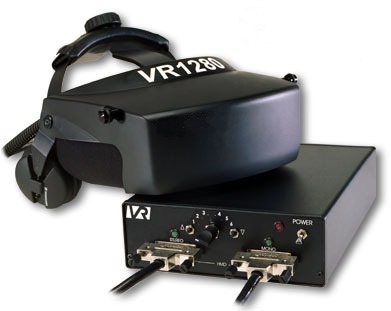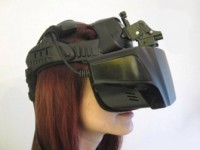
1962 - A big, bulky machine with a screen and chair in front mystifies onlookers. Called the Sensorama, the machine which was made by Morton Heilig, the first multimedia and VR specialist was far beyond its years.
It could render stereoscopic 3D images in a notably wide field of view, had fans to give the sensation of wind, allowed people to tilt and even triggered aromas to go with the environment. While the machine failed to attract the attention its maker was intending it did open the doors to a new kind of reality - a virtual one.
VR is no doubt witnessing a renaissance these days, however people in academic and industrial circles have been well acquainted with it for over 2 decades. The VR landscape is littered with some very interesting takes on how to transport us to a land far, far away.
Most previous generation HMDs were developed for heavy duty research, defense, professional training and medical simulation and were quite out of reach for the average Joe and Jane. That being said, their development paved the way to affordable VR. Here are 4 headsets which pushed the envelope and laid the groundwork to get VR technology to where it is today...
nVisor SX60

Image credit: wikipedia.com
NVIS has been a major player in the VR space having come out with many products that have been well received by the military, industrial and commercial organizations. The SX60 when released in 2003 offered features that are as of yet unmatched.
Its LCOS (Liquid Crystal on Silicon) display came with a SXGA resolution of 1280X1024 (per eye) but also managed to cram 3.1 million pixels into a screen 0.83 inches across for an unbelievable DPI of 3084.34!
LCOS displays stack short pulses of color on top of one another instead of using sub-pixels which allows for a crystal clear image without any annoying screen-door effect - something current generation VR hardware is still to iron out.
On the flip side, the HMD weighs a hefty 1 Kg and only has a field of view of only 60 degrees.
- Make: NVIS
- Resolution: 1280X1024
- F.O.V.: 60 degrees
- Price: $24,000
Visette 45 SXGA

Image credit: vrealities.com
The sleek, space-age looking headset was quite the revolution when it was released way back in 2005. The Visette 45 offered true stereoscopic 3D, SXGA resolution and offered a diagonal field of view of 45 degrees, and optional head tracking, all for a paltry $12,000.
Its producer, Cybermind came out with a VR arcade in San Francisco during the early 1990s, and they even had an outrageous VR wedding! The company was sold to Arcadian VR in 2004, which was later acquired by Virtuosity Tech in 2012 which focuses on building custom VR solutions for industrial and commercial applications.
- Make: Cybermind
- Resolution: 1280X1024
- F.O.V: 45 degrees
- Price: $12,000
VR1280

Image credit: vrealities.com
Similar to NVIS's SX60, the VR1280 offered a respectable 720p resolution rendered on a FLCOS (Ferroelectric Liquid Crystal on Silicon) display for a very sharp image. Made for professional use and research in mind, the HMD can accept one VGA cable for each eye and can also project both stereoscopic 3D and monoscopic viewing formats.
The headset is made by Virtual Research which has been designing VR hardware since 1991. While the image it produces are no doubt sharp, its diagonal field of view of 60 degrees left a lot to be desired.
- Make: Virtual Research
- Resolution: 1280X1024
- F.O.V.: 60 degrees
- Price: $16,000
VR Pro 1080P

Image credit: vrealities.com
Much like Virtual Research, the maker of the Pro - Virtual Realities has been around since the heydays of VR. The company has produced a range of input and output devices for commercial, defense and industrial applications including stereoscopic 3D HMDs, controllers, head and motion trackers.
The Pro 1080P as the name suggests has a full HD 1920X1080 resolution and comes with an integrated VirtualCube head tracker. Unlike the other entries here, the Pro offers a far more immersive experience thanks to its impressive 120 degrees diagonal field of view. The HMD can also use either VGA or HDMI input.
- Make: Virtual Realities
- Resolution: 1920X1080
- F.O.V.: 120 degrees
- Price: $8,500
These are by no means the only innovators, and there were many other brands which made major advancements as well. Companies like Sensics which started off in the late 1990s helped fuel the VR revolution, and continue to offer some of the best solutions for research, medical applications, defense and training.
The Sensics dSight HMD is still considered the gold standard for professional use offering a wide 140 degree field of view, 1920X1280 resolutions per eye, integrated head tracking and optional eye tracking. As industrial technology trickles into consumer products, headsets like the dSight provide a sneak peek into what the next gen offerings from Oculus, HTC and Sony might look like - so there's plenty to be excited about!